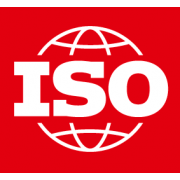Founded
Web Address
Standards Prefix
ISO is an independent, non-governmental international organization with a membership of 163 national standards bodies. It is headquartered in Geneva, Switzerland. It is the world's largest developer of voluntary international standards and facilitates world trade by providing common standards between nations.
The ISO story began in 1946 when delegates from 25 countries met at the Institute of Civil Engineers in London and decided to create a new international organization ‘to facilitate the international coordination and unification of industrial standards’. On 23 February 1947 the new organization, ISO, officially began operations.
Since then, ISO has published over 21705 International Standards covering almost all aspects of technology and manufacturing.
Applicable Standards
| Name | Document Title | Overview |
|---|---|---|
| ISO 14001 | ISO 14001:2015 Environmental management systems | Achieving a balance between the environment, society and the economy is considered essential to meet the needs of the present without compromising the ability of future generations to meet their needs. Sustainable development as a goal is achieved by balancing the three pillars of sustainability. |
| ISO 20860-1 | ISO 20860-1:2008 | Road vehicles -- 50 ohms impedance radio frequency connection system interface -- Part 1: Dimensions and electrical requirements ISO 20860-1:2008 specifies male and female connectors of the 50 ohms impedance system interface for radio frequency applications in road vehicles, and ensures communication to and within road vehicles. It specifies dimensional and electrical requirements and characteristics required for interchange ability. This connection system can be applied in all relevant equipment and cable connections of road vehicles. |
| ISO 20860-2 | ISO 20860-2:2009 | Road vehicles -- 50 ohms impedance radio frequency connection system interface -- Part 2: Test procedures ISO 20860-2:2009 specifies the tests for male and female connectors of the 50 ohm impedance interface for radio frequency applications in road vehicles, and ensures communication to and within road vehicles. These tests apply to all coaxial connectors for road vehicles with a 50 ohm radio frequency interface in accordance with ISO 20860-1. |
| ISO 45001 | ISO 45001:2018 Occupational health and safety management systems | An organization is responsible for the occupational health and safety of workers and others who can be affected by its activities. This responsibility includes promoting and protecting their physical and mental health. The adoption of an OH&S management system is intended to enable an organization to provide safe and healthy workplaces, prevent work-related injury and ill health, and continually improve its OH&S performance. |
| ISO 50001 | ISO 50001:2018 Energy management systems | The aim of this document is to enable organizations to establish the systems and processes necessary to continually improve energy performance, including energy efficiency, energy use and energy consumption. This document specifies the energy management system (EnMS) requirements for an organization. Successful implementation of an EnMS supports a culture of energy performance improvement that depends upon commitment from all levels of the organization, especially top management. In many instances, this involves cultural changes within an organization. |
| ISO 9001 | ISO 9001:2015 Quality management systems | The adoption of a quality management system is a strategic decision for an organization that can help to improve its overall performance and provide a sound basis for sustainable development initiatives. ISO 9001:2015 sets out the criteria for a quality management system and is the only standard in the family that can be certified to (although this is not a requirement). It can be used by any organization, large or small, regardless of its field of activity. In fact, there are over one million companies and organizations in over 170 countries certified to ISO 9001. |
